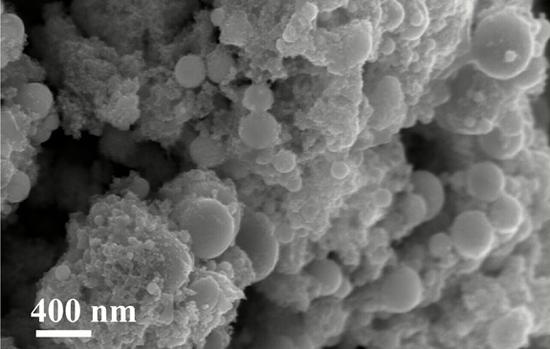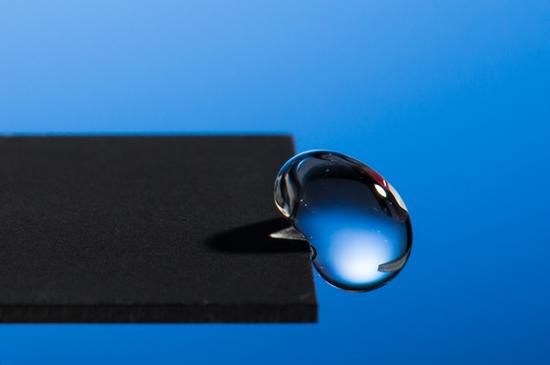Researchers at the University of Rochester in New York have developed an unusual new surface material by bombarding ordinary metals with femtosecond laser pulses, which can effectively absorb light energy, waterproof, and self-purify. This versatile material can be used to make highly durable, low-maintenance solar collectors and solar sensors. “This is the first time that a versatile metal surface material has been produced using a laser. This material has multiple functions such as super-hydrophobic (waterproof), self-purification, and high absorption.â€

The femtosecond laser is etched out of the metal surface in a hierarchical structure, such as the platinum surface shown in a scanning electron microscope (SEM). Photo Source: Guo's Laboratory / University of Rochester

Professor Guo Chunlei of the School of Light at the University of Rochester has developed a technique that uses a laser to make the material hydrophobic, as shown in the figure, the water droplet slides off the surface of the sample that has been treated with this technique. Image credit: J. Adam Fenster / University of Rochester
Guo Chunlei said that he is a physicist at the School of Light at the University of Rochester. Guo and the researcher Anatoliy Vorobyev, a colleague at the University of Rochester, developed the new material. Researchers in the Journal of Applied Physics, published by the American Institute of Physics, detailed the process of making this material using laser etching technology.
The light absorption capacity of the lifting material will benefit from those technologies that need to collect light energy, such as solar sensors and solar devices, while the super-hydrophobicity will make the surface of the material rust-proof, anti-icing and anti-biofouling, all of these features will be improved. The durability of the device makes it easier to maintain, Guo said. Superhydrophobicity also facilitates self-purification on the surface of the material because impenetrable water droplets can effectively dislodge dust particles from the surface.
The researchers used the ultra-short femtosecond pulses of the order of one trillionth of a second to bombard platinum, titanium, and copper samples to obtain this new type of surface material. "In a short bombardment, the peak energy of the laser pulse is equivalent to the total energy of the entire North American power grid," Guo said.
These super-energy laser pulses etch a large number of fine lines on the metal surface, and nano-structures densely distributed on the lines are formed. The microstructures fundamentally change the optical and wetting properties of these three metallic surfaces, transforming normally reflective metallic surfaces into highly absorbable surfaces and making them water-repellent.
Most commercially used materials that are hydrophobic and highly optically absorbent rely on chemical coatings that degrade or fall off over time, Guo said. But for this new material, the laser-etched nano-micro structures have become intrinsic properties of the metal surface and therefore do not change over time.
The new material's hydrophobicity is also comparable to the well-known non-stick coatings. "Many people know that Teflon (non-stick coating) is a hydrophobic surface material, but if you want water droplets to slip from the non-stick coating, you have to tilt the surface nearly 70 degrees. Guo said. “The surface material we developed was more hydrophobic, so it only needs to tilt a few degrees and the waterdrops can slide off.â€
Guo and his colleagues have many years of experience in using lasers to transform the nature of materials. A few years ago, they used lasers to develop an ultra-hydrophilic material that, on its surface, the water droplets would even flow upwards against gravity. “After that, we wanted to create a technology that is the opposite of it, that is, make the surface of the material waterproof.â€
The next step for the research group is to develop more functions on other materials such as superconducting materials and dielectric materials. These versatile features should have broader applications, such as making better solar collectors.
The mechanical fuel level gauge integrates liquid level detection and display (without any external device), which can display liquid level directly and is easy to install. It is widely used in gasoline tank, diesel tank, hydraulic station and water tank of all kinds of generators and engines.
Mechanical Fuel Level Gauge,Fuel Level Indicator,Fuel Tank Level Gauge,Diesel Tank Level Gauge
Xi'an Gavin Electronic Technology Co., Ltd , https://www.cngamicos.com